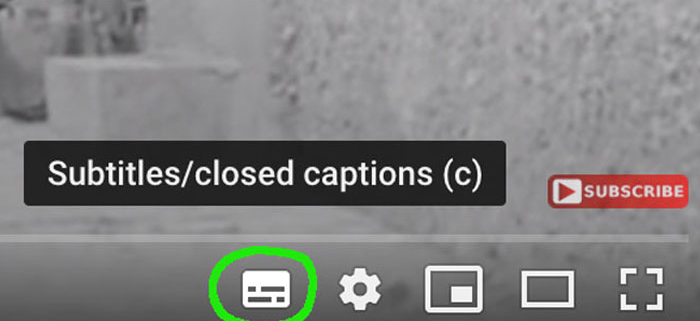Offline captions – why you should be using them for your videos
Offline Captions help everyone, but unfortunately, most videos don’t have them.
In this short article, we explain what offline captions are, why they’re helpful, and how you can add them to your videos.
What are offline captions?
Offline captions are simply captions which are added to a video afterward, as opposed to live broadcasts where someone is typing what is being said as it’s happening.
They come in two varieties: subtitles and closed captions.
Subtitles show what’s being said on screen, so either the dialogue between characters or what the narrator is saying in a voiceover. Subtitles are usually found in foreign movies, when the viewer can’t understand the original language, but can still hear the original dialogue and sound effects.
Closed Captions are slightly more encompassing than subtitles. They not only show what is being said on screen, but they will also show other sounds and music that are happening. Closed captions can include the emotion of an actor’s voice, a glass smashing offscreen, or a build-up of tense or dramatic music.
Where can offline captions be used?
Captions can be used on any video footage where there is sound, it’s as simple as that.
There doesn’t even have to be dialogue on the video, the noise of animals or machinery is enough to warrant captions for people with hearing loss.
Whether it’s YouTube videos, educational videos, amateur movies, professional documentaries… anything that is watched by an audience can (and should) have the option of captions.
Why use offline captions?
Accessibility is the obvious answer.
In the UK, 1-in-6 people are either deaf or hard of hearing.
Globally, almost half a billion people suffer from severe hearing loss, with the World Health Organisation estimating that figure to rise to 2.5 billion by 2050.
That’s a significant portion of the population who are at a disadvantage when it comes to watching videos.
It’s essential that captions are used to help those hard of hearing if we want true equality in society.
Captions also provide a practical advantage, even for those without hearing loss.
It’s also been proven that people remember something better when they see rather than when they hear it, so reading along with a video helps focus, engagement, and memory.
All of these suggest offline captions for educational videos should be mandatory.
We can help add offline captions to your videos
Closed captions and subtitles add greater flexibility and scope, not only for your viewers, but for your company and brand.
With years of experience and hundreds of satisfied clients, you can rely on us for all your offline captioning requirements.
All our captioning work is checked and re-checked as part of our commitment to quality, with time-coding, translations, and mastering all available upon request.
We provide subtitles in over 30 document formats, including SBV for YouTube, .STL for DVD Authoring, or XML for Final Cut Pro.
If you would like to know more about our offline captions and how they can help your business, then please don’t hesitate to contact us.
Our friendly and professional staff will be happy to help in any way they can.




Leave a Reply
Want to join the discussion?Feel free to contribute!